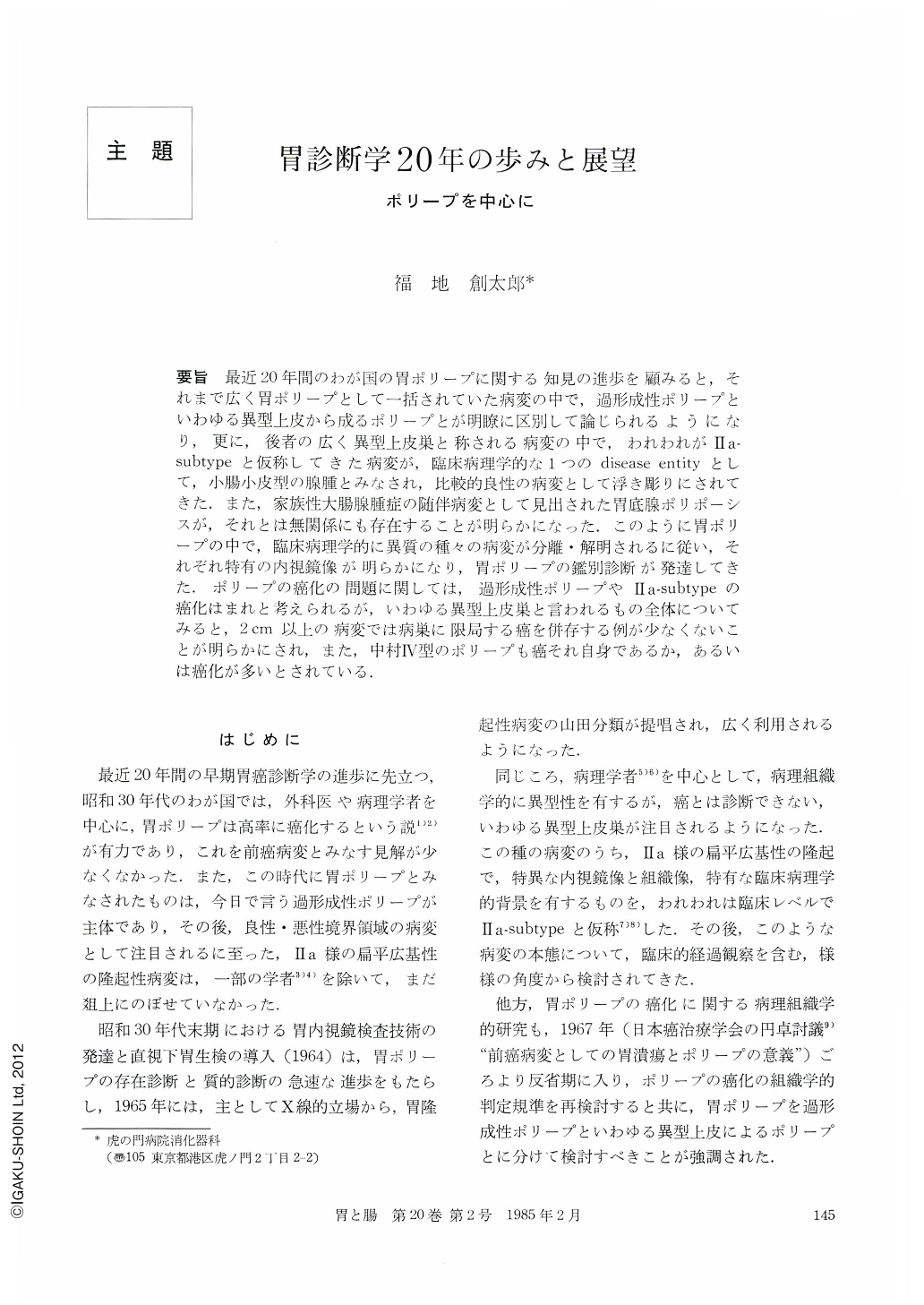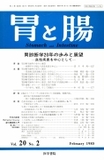Japanese
English
- 有料閲覧
- Abstract 文献概要
- 1ページ目 Look Inside
要旨 最近20年間のわが国の胃ポリープに関する知見の進歩を顧みると,それまで広く胃ポリープとして一括されていた病変の中で,過形成性ポリープといわゆる異型上皮から成るポリープとが明瞭に区別して論じられるようになり,更に,後者の広く異型上皮巣と称される病変の中で,われわれがⅡa-subtypeと仮称してきた病変が,臨床病理学的な1つのdisease entityとして,小腸小皮型の腺腫とみなされ,比較的良性の病変として浮き彫りにされてきた.また,家族性大腸腺腫症の随伴病変として見出された胃底腺ポリポーシスが,それとは無関係にも存在することが明らかになった.このように胃ポリープの中で,臨床病理学的に異質の種々の病変が分離・解明されるに従い,それぞれ特有の内視鏡像が明らかになり,胃ポリープの鑑別診断が発達してきた.ポリープの癌化の問題に関しては,過形成性ポリープやⅡa-subtypeの癌化はまれと考えられるが,いわゆる異型上皮巣と言われるもの全体についてみると,2cm以上の病変では病巣に限局する癌を併存する例が少なくないことが明らかにされ,また,中村Ⅳ型のポリープも癌それ自身であるか,あるいは癌化が多いとされている.
That gastric polyp grows into cancer with high rate had once been prominent together with views of a majority regarding gastric polyp as precancerous lesion. Following this, the histological criteria of the diagnosis of cancer was reevaluated in that it was considered necessary to discuss gastric polyp by dividing it into two types, namely, hyperplastic polyp and polyps composed of atypical epithelium of intestinal type. Moreover, pathohistological examination of the resected stomach ran parallel to clinical follow-up study by endoscopy and biopsy as prominent means for studying the cancerous change. As a result, such points have been clarified:
(1) The rate of cancer of hyperplastic polyp is very low, (2) Ⅱa-subtype of polypoid lesion that we maintain is regarded as adenoma of small intestinal epithelial cell type and is thought to be almost benign, (3) with reference to all kinds of so-called atypical epithelium, lesions under 2 cm in size rarely grow into cancer but there are quite a many cases where lesions over 2 cm in size are associated with cancers remaining within the nest of the lesion.
As mentioned above, with the division and the elucidation of various kinds of lesions different in the entity clinicopathologically in gastric polyps, the characteristic endoscopic appearances of each lesion have been made clear and which developed the differential diagnosis of gastric polyp. However, we still encounter lesions such as those of well-differentiated adenocarcinoma which are difficult to differentiate from Ⅱa-subtype of polypoid lesion or so-called atypical epithelial cell in endoscopy or histology by biopsy. Thus, careful follow-up study for lesions diagnosed as Group Ⅲ are necessary through comparing the endoscopic findings with histological ones by biopsy.

Copyright © 1985, Igaku-Shoin Ltd. All rights reserved.


